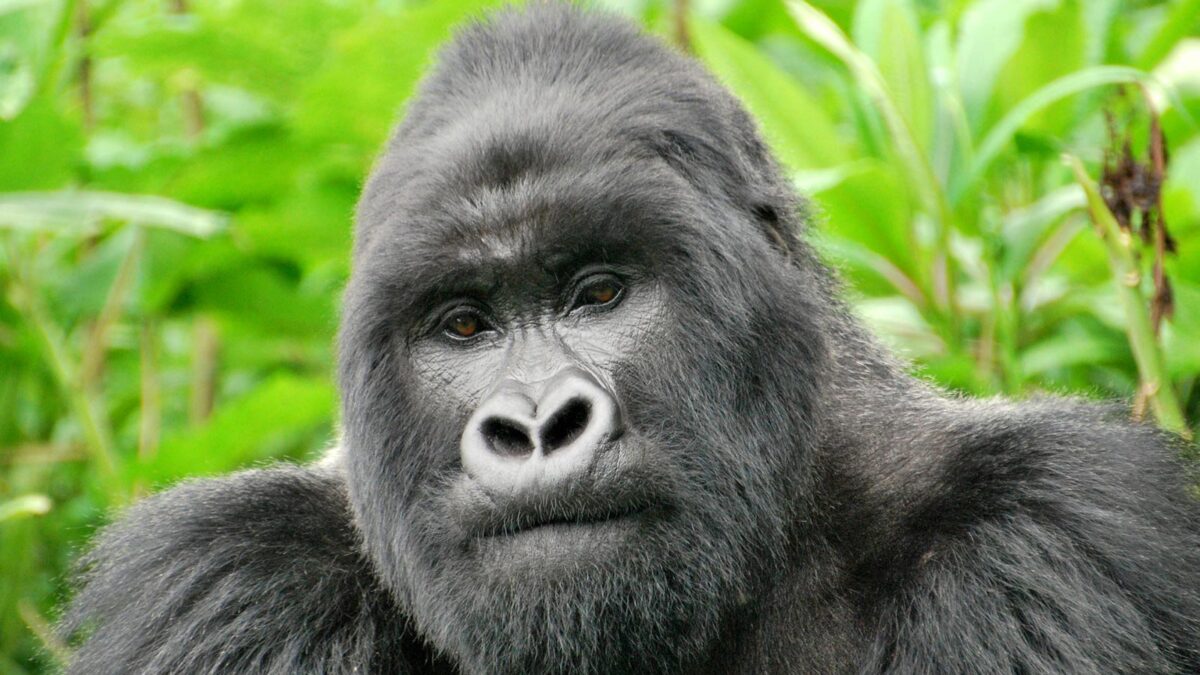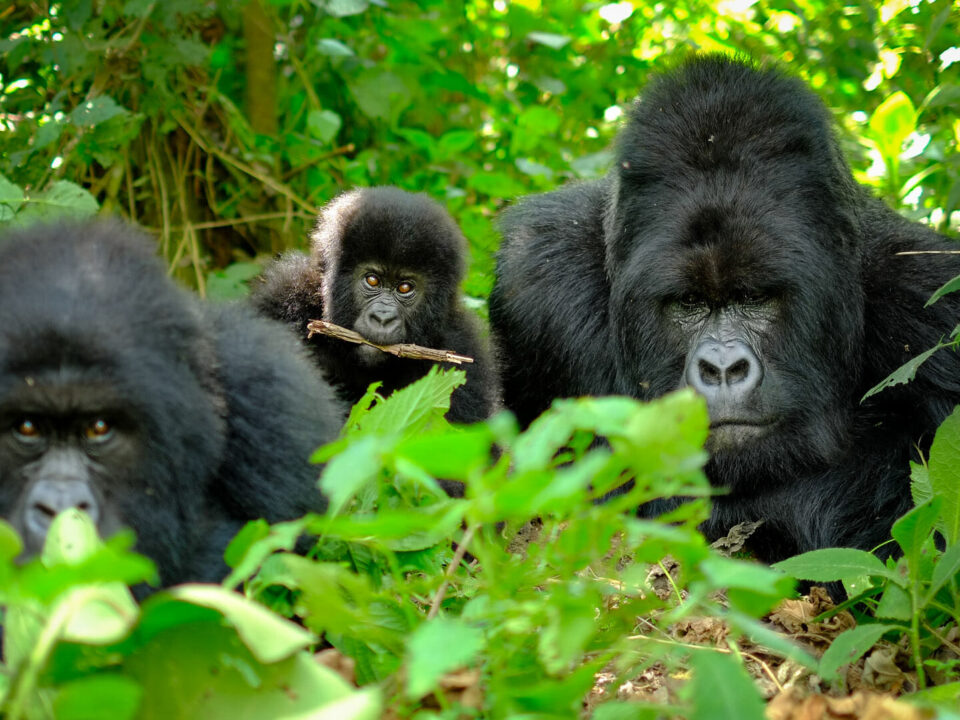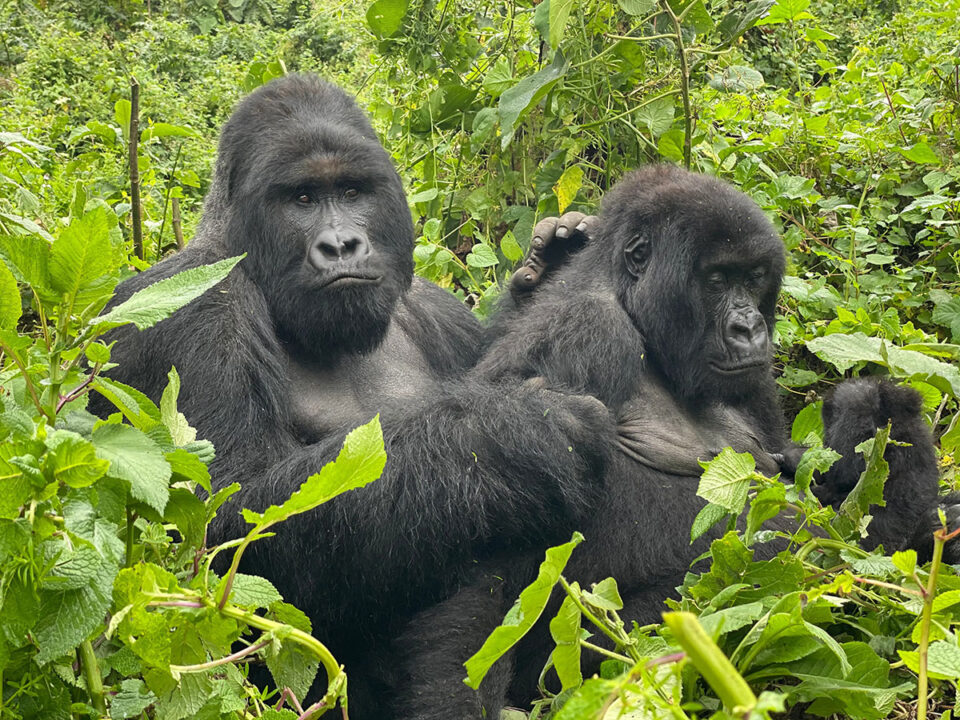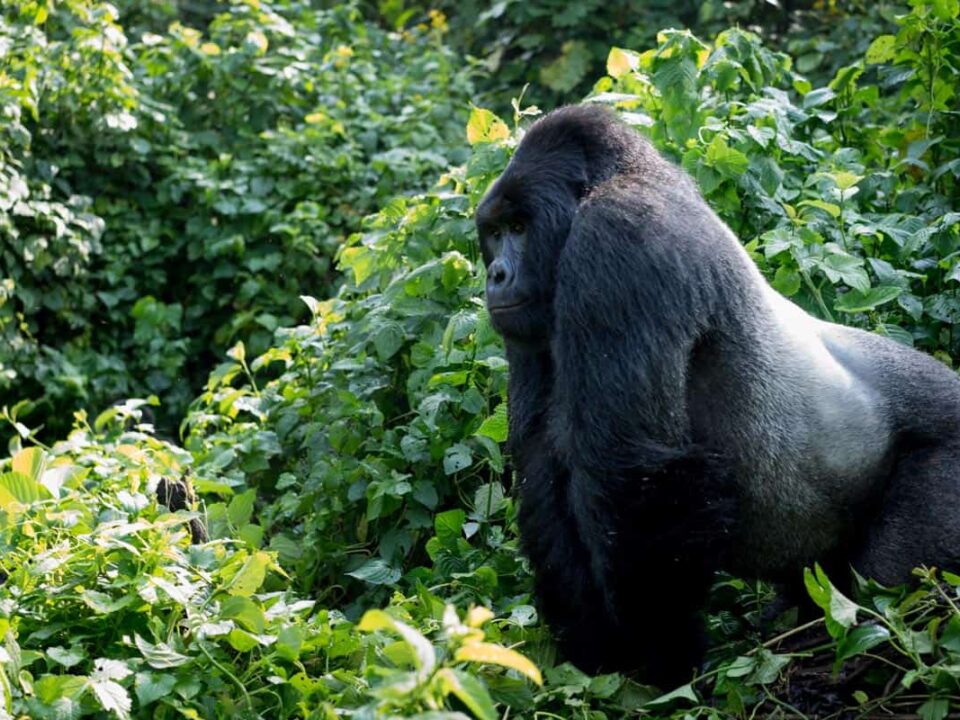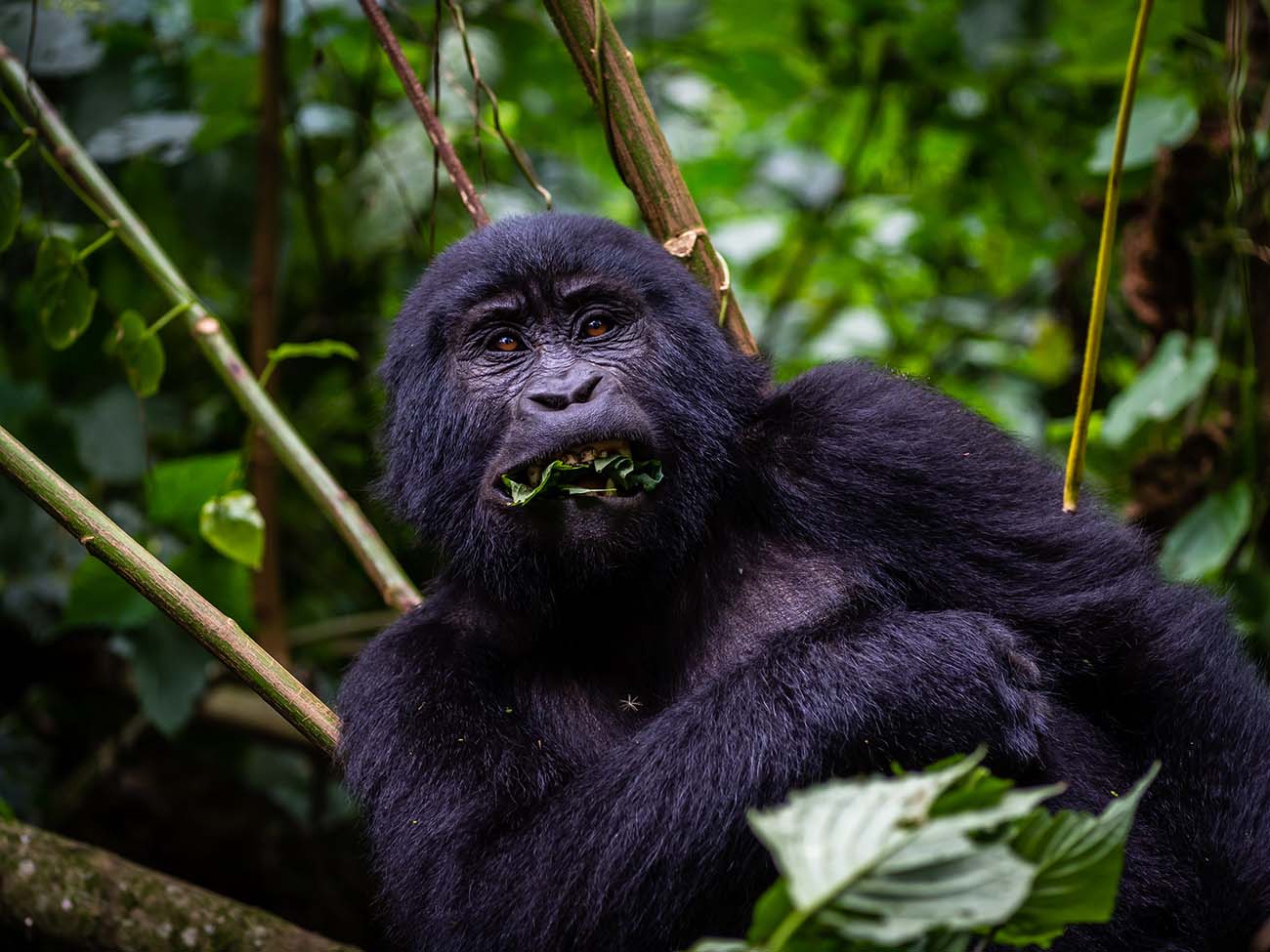
Bwindi Gorilla Tracking from Lake Bunyonyi
November 21, 2023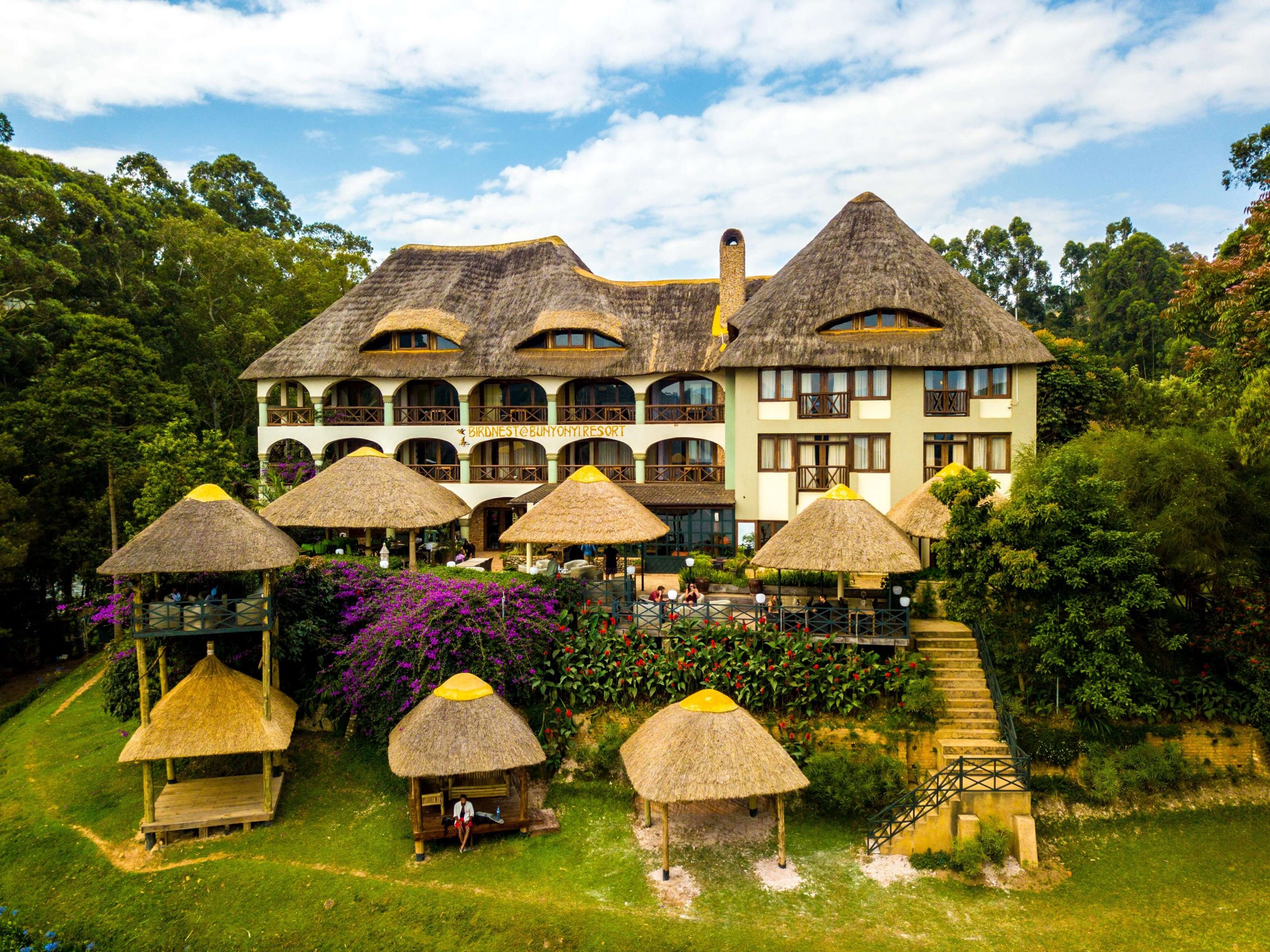
Luxury Birdnest Resort Lake Bunyonyi Kabale
November 21, 2023Unlocking the Mystery: Likelihood of Encountering Mountain Gorillas in Rwanda’s Volcanoes National Park
Curiosity looms as travelers embark on the journey to Rwanda for the enthralling experience of gorilla trekking. The foremost question echoes: What is the likelihood of sighting mountain gorillas in their natural habitat? This inquiry stems from the wild nature of these animals residing on the fringes of the Africa Great Rift Valley, within one of the planet’s few remaining protected forest covers.
Rwanda boasts not only Volcanoes National Park but also other renowned national parks like Gishwati Mukura National Park, home to chimpanzees and endangered mountain gorillas, Nyungwe for chimpanzee tracking and canopy walks, and Akagera National Park for captivating wildlife safaris.
Unveiling the Gorilla Kingdom: Where Does Mountain Gorilla Tracking Take Place in Rwanda?
The heart of the mountain gorilla tracking adventure lies in Volcanoes National Park, an expanse covering 160 sq km of rainforest nestled in the hilly and elevated altitudes of the greater Virunga Massif. This massif extends across three countries: Rwanda, Uganda, and the Democratic Republic of Congo. Within Volcanoes National Park, 11 habituated mountain gorilla families graciously open their habitat to tourism.
Decoding the Essence: What is Gorilla Tracking?
Gorilla tracking involves intrepid tourists venturing on foot into the dense African forest cover to seek out the endangered mountain gorillas. Accompanied by a guide and trackers, this immersive experience allows visitors to spend one captivating hour with the gorillas in their natural habitat.
Navigating the Gorilla Realm: How is Gorilla Tracking Done?
Embarking on the odyssey begins with securing a Rwanda gorilla permit, followed by the journey from one’s home country to Rwanda, the “Land of a Thousand Hills.” After a nourishing breakfast, participants pack essentials, including food, water, rain jackets, cameras, and more, before driving to the park headquarters in Kinigi. Here, the guide facilitates registration and imparts crucial information during a pre-trek coffee session.
The trek itself involves a car transfer to the gorilla group’s starting point, a journey ranging from 20 minutes to 2 hours. Upon arrival, participants meet guides, armed escorts for protection, and porters to assist with belongings. The trek duration varies, spanning 2 to 7 hours, depending on the gorilla group’s location. Communication with trackers ensures a successful encounter, and after locating the gorillas, participants relish a mesmerizing hour with these majestic creatures before returning.
Assessing the Odds: What is the Likelihood of Seeing Mountain Gorillas in Rwanda?
In all honesty, the likelihood of encountering mountain gorillas in Volcanoes National Park stands at an impressive 99%. This high probability owes itself to the meticulous habituation of gorilla families and the dedicated trackers who chart their movements, ensuring a memorable experience for visitors.
Deciphering Gorilla Movements: Factors Influencing Mountain Gorilla Territory
Understanding the dynamics of mountain gorilla movements unveils critical factors influencing their territorial range beyond the standard 1 km radius.
– Availability of Food:
The primary determinant of gorilla movements is the availability of food. During periods of fruit and shrub scarcity, mountain gorillas cover extended distances, exceeding the typical 1 km radius. Their ability to traverse hilly terrain expeditiously contributes to the challenge of the trek.
– Interaction with Fellow Gorillas and Wildlife:
Innately territorial, gorillas may cover considerable distances if encounters with other families occur. Dominant silverbacks may engage in conflict, resulting in significant movement. Moreover, encounters with wildlife like elephants can prompt gorillas to retreat far into the forest, presenting challenges for trackers and making the trek more demanding.

